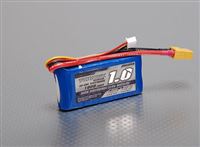 Rechargeable batteries have changed a lot since I was a kid. They used to be big and bulky and not hold much of a charge. As I’m learning about RC planes, I’m learning that the new battery technology is pretty impressive. They’re very small, pack a lot of punch and use computerized chargers to make sure they charge correctly. They are, however, a bit more dangerous (or else I underestimated old rechargeables.)
Rechargeable batteries have changed a lot since I was a kid. They used to be big and bulky and not hold much of a charge. As I’m learning about RC planes, I’m learning that the new battery technology is pretty impressive. They’re very small, pack a lot of punch and use computerized chargers to make sure they charge correctly. They are, however, a bit more dangerous (or else I underestimated old rechargeables.)
Modern rechargeables use lithium polymer technology (LiPo). These are some of the safety tips I’ve gathered in my research:
- These things are prone to catching fire in many different circumstances (overcharging, drawing too much current, puncturing or damaging the battery, etc.) They should always be stored in a cool dry place inside a fireproof bag.
- Never leave the batteries unattended while charging and preferably do it on a concrete surface with a smoke detector overhead.
- LiPo batteries have both a positive and negative power plug as well as a plug that provides individual access to each cell in the battery. The latter is useful for charging and balancing the cells.
- LiPos are made up of various numbers of cells. Never charge a cell over 4.2V or let it discharge past 3.0V.
- For best results, only discharge 80% of the capacity.
- LiPo batteries should be stored at around 3.7V per cell.
- Modern chargers are computer controlled and will help keep each cell in your battery balanced, avoid charging too fast, and help you keep within the recommended voltage limits.
- If you’re going to cut the connector off a battery to place it with a different type, don’t snip both wires at the same time. You’ll short out the battery! (Seems obvious in hindsight but I’m pretty sure I would have done it without thinking if I hadn’t seen a warning.)
These little technological wonders can crank out a huge number of amps for longer than seems possible, but you need to treat them with a lot of respect. FliteTest has a good video and accompanying article about batteries in their beginner series.
